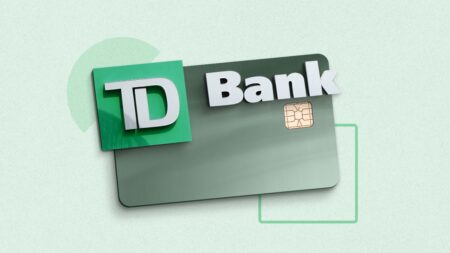Tens of millions of Americans have borrowed money to pay for college. If you are one of those borrowers, chipping away at student loan debt might be one of your big financial goals.
If you’re trying to pay down private student loan debt, a good place to start is to see if you can lower your interest rate. Below are four ways to lower the interest rate on your student loans and trim your student loan payments.
1. Refinance your student loans
Best for: Those who have a solid credit score and want to pay off their loan quickly
If you have a solid credit foundation, are employed and plan to pay off your loan quickly, consider refinancing your private student loans. Well-qualified applicants can take advantage of lower interest rates that could save money on monthly loan payments and overall interest fees.
You may be able to refinance a student loan if you have bad credit, but your rates could end up being higher. A good credit score, by comparison, might improve your odds of qualifying for a lower interest rate. To improve your credit score, follow good credit habits, like paying on time and reducing the balance on your credit cards, thereby lowering your credit utilization ratio.
It’s also okay to be strategic and refinance multiple times since there are no prepayment penalties on student loans, and most loans don’t charge origination fees. Use a student loan refinance calculator to understand if you should start the process now or wait.
Key takeaway
With a good credit score, you can save money on student loans by refinancing. But weigh your options carefully before proceeding, particularly if you do not have great credit.
2. Take advantage of discounts
Best for: Borrowers with predictable income or those with multiple accounts with the same company
One of the simplest ways to lower your interest rate is by automating your payments. Many lenders offer 0.25 percent to 0.5 percent discounts if you set up autopay from a checking or savings account. It can add up over time.
With some lenders, you can qualify for loyalty discounts as well. If you can find them, loyalty discounts reward borrowers and co-borrowers who have other accounts with the lender or bank — like a savings account or another loan. SoFi, for example, offers a “member discount” if you take out a student loan after taking out a personal loan or an investment account. Check with your lender to learn what’s available.
Key takeaway
Enrolling in autopay is a straightforward option for borrowers that can save them money.
3. Negotiate with your lender
Best for: Those who got their student loans during high-interest-rate environments
If you borrowed at the private level or have already refinanced, you might consider shopping around for a more competitive student loan rate and presenting it to your current lender. Although it’s a long shot, the lender might be willing to match that rate to keep your business.
If you fail to make timely payments, you could face damage to your credit rating on top of late fees. Make your payments in full and on time until after the negotiations or consolidation are complete to avoid putting your financial health at risk.
Key takeaway
Compare interest rates from other lenders and see if your current lender is willing to negotiate your rate.
4. Add a cosigner
Best for: Those who have less than stellar credit and a trusted third party willing to cosign
If you have poor credit but a trusted friend or family member who has good credit is willing to help, many private lenders allow you to add a co-signer to your student loan. Adding a co-signer might help you if you need to show better credit or more income to qualify for a lower interest rate.
Your co-signer will be equally responsible for the loan, which can pose a financial risk to the co-signer. Some lenders have co-signer release programs, which allow you to release your co-signer from their financial responsibility once you meet certain credit and payment requirements.
Key takeaway
Adding a co-signer could significantly lower your monthly payments, but your co-signer will be equally responsible for the loan.
What to do if you can’t get a lower rate
Not every method will be the right fit for every student loan borrower. But there are other ways to trim your student loan costs, even if your interest rate remains the same.
Deduct interest payments from your taxes
You may be able to deduct a portion of your student loan interest payments from your top-line earnings. If you’re eligible, the deduction could offset the amount of income you have to claim and reduce your tax obligation.
Here’s how it worked for the 2023 tax year:
- Individuals with a modified adjusted gross income (MAGI) of less than $75,000 (or married filers whose income is less than $155,000) can deduct up to $2,500 worth of interest payments.
- Phaseouts occur for single filers earning between $75,000 and $90,000 and joint filers earning $155,000 or more.
The student loan interest deduction is also an above-the-line exclusion from income, so you can claim the deduction even if you don’t itemize it on your tax return.
Check for cash back specials or rebates
Though it’s not a lower interest rate, some private student loan lenders offer cash back specials and refinancing rebates. Credible, for instance, offers a “best rate guarantee,” which entails a $200 gift card if you can find another lender that offers you a lower APR on a refinance loan.
Adjust your payment plan
Experimenting with different payment plans might also help you maximize your money and pay less interest over time, even at the same interest rate. There are multiple strategies you can try with this approach, such as:
Select a shorter repayment plan
A shorter timeline will increase your monthly payment and won’t lower your interest rate, but it will reduce the total amount of interest you pay over the life of your loan. If future interest accrual is one of your top concerns — and you know you can swing a higher monthly payment — then you may want to contact your lender to see if it offers a shorter repayment plan.
Remember that if you cannot make the monthly payments, it could derail the entire payoff strategy and will likely leave you saddled with more high-interest debt. Conduct a financial audit before committing to a new repayment plan to see if you can make the payments without dipping into your emergency or savings accounts.
Make multiple payments a month
Making a payment once every two weeks instead of once a month is good psychological motivation to keep rapidly paying down your student loans. Plus, it will save you money in interest charges down the road. Many lenders offer the option to manually select which loan their payment is going towards on an online portal, which makes it easier to track your progress.
You can also use the debt avalanche method, which will help you save interest by focusing on your loans with the highest interest rate first while making the minimum payments on the rest of your loans. Once you pay down the debt with the highest interest rate, you’ll move on to the next loan with the highest interest rate until you’ve paid off your student loans.
Regardless of the method that works best for you, make your payments in full and on time. As long as you focus on reducing your loan amount in regular monthly increments, you could save thousands of dollars in interest over the life of your loan.
Bottom line
Lowering your interest rate is one approach that could help you pay less overall on your student loans. But it’s not the only strategy that works. Being financially savvy and knowing your repayment options is the best way to save money in the long run.
If you can’t qualify for a lower interest rate, try to find out why. If your credit score is holding you back, prioritize improving your creditworthiness as you look into alternative repayment methods or enlist the help of a co-signer. Making your student loan payments on time will help improve your credit score, so regardless of whether or not you qualify for a lower rate, always prioritize making your monthly payment to save money in the long run.
Read the full article here
















